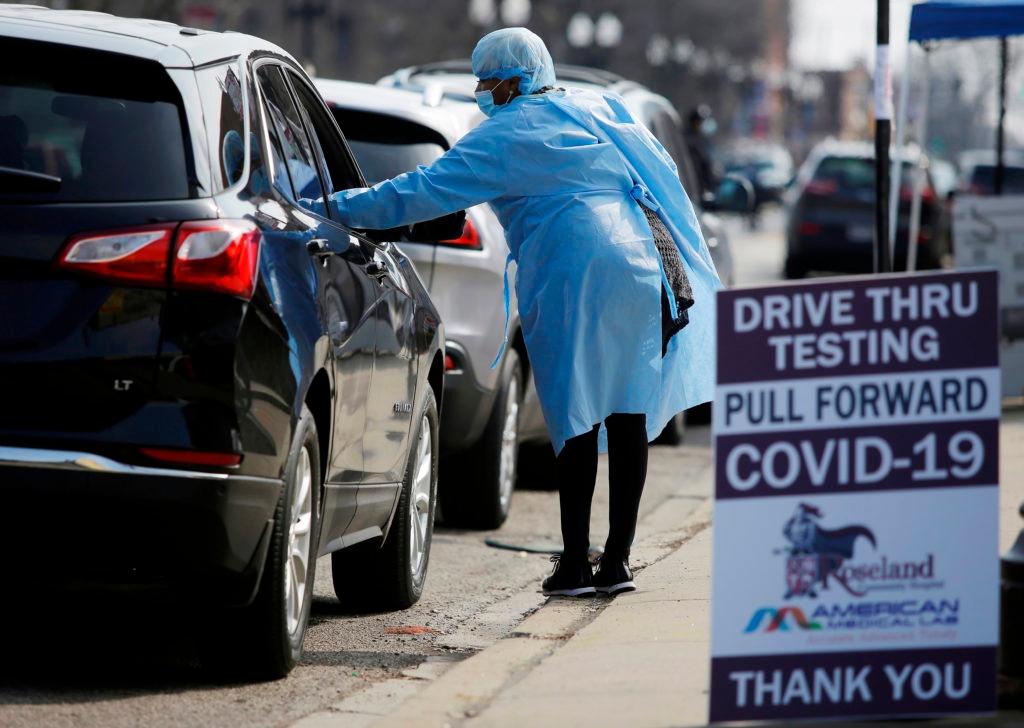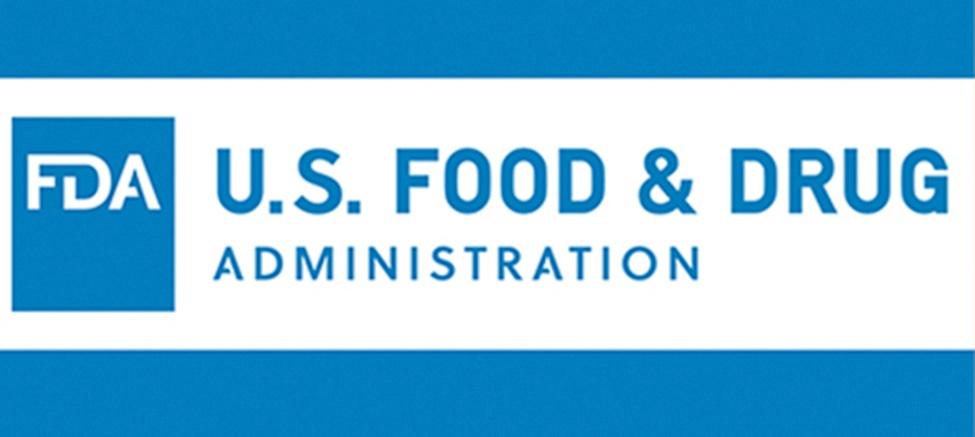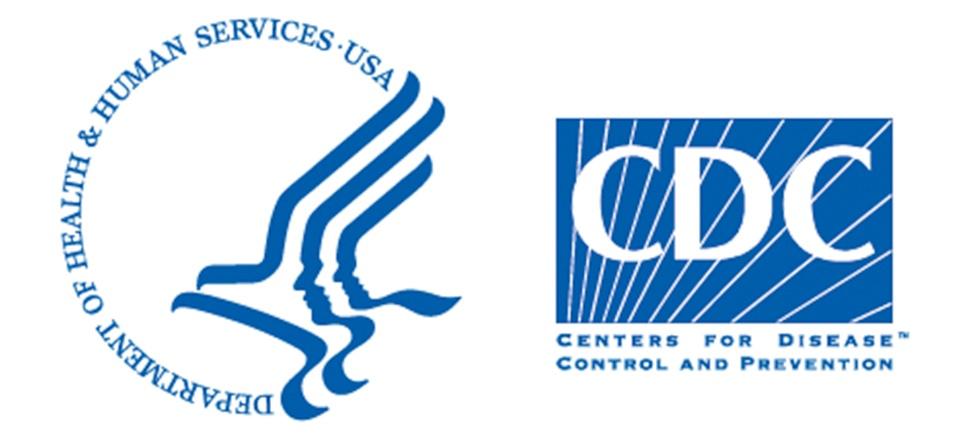Next Avenue - LIVING
Older Americans Look at Life Beyond COVID-19 Seclusion
The challenges and change they see ahead in the 'new normal'

A few days ago, we had a tough conversation with our kids. We explained that two of their beloved holiday traditions are not happening this year: We are not gathering with grandpa and cousins for a Thanksgiving meal, and their artist-aunt is not traveling to our house for a weekend of tree-trimming and holiday crafting ... More >

COVID-19: Decision Tool for Individuals and Families
COVID-19 is still spreading across Wisconsin communities. We can all do our part to protect our communities by limiting contact with others and avoiding nonessential trips out in the community as much as possible.

Coronavirus Stimulus Check Scams: What you need to know.
Do not give out your PayPal account information, Social Security number, bank account number or anything else if someone claims...
People all over the world and of all ages can get COVID-19 or spread the virus. NBA players, members of Congress, and Hollywood celebrities are among the millions of people who have been infected. Fewer infants, children, and young adults have died or gotten seriously ill so far, but they are not immune.
Minority racial and ethnic groups have been disproportionately impacted by the coronavirus, according to the CDC and the COVID Tracking Project at The Atlantic, which collects data from every U.S. state and territory. As of mid-June:

The novel coronavirus has impacted the way we live, the way we work or go to school. Some of the information has probably been confusing, scary and at times, contradictory.
So let’s sort through what we know about the virus, its symptoms, how long it lives on surfaces, and how you can help slow the spread.
First and foremost, stay at home even if you’re not the person who is sick. The CDC recommends “social distancing” for two weeks, which is the length of time believed to be the disease’s incubation period. The sick person should stay in a room away from other people, and if possible, use a separate bathroom. Continue to wash your hands, clean and disinfect high-traffic hard surfaces (door knobs, countertops, faucet handles) and don’t share food or drinks.
Contact your medical care provider online or by phone to seek guidance. If you are not experiencing a medical emergency, do not rush to a clinic before you speak with a provider. If you are struggling to breathe, go to an emergency room immediately.
COVID-19, the illness caused by a new kind of coronavirus, has dramatically altered life as we know it in the United States. Schools have closed, businesses have shut down, people have been forced into isolation and left with uncertainty.
What started as a small outbreak in Wuhan, China, months ago has now spanned the globe. And still, medical and public health officials in scores of countries are racing to find answers.
This is a guide to the things we do know, from scientists, doctors and public health experts — a resource that changes alongside our understanding of this virus.
Have a question you’d like answered? Leave a comment or fill out this form.We’ll keep updating this post. And you can read, watch and listen to all of our coronavirus coverage here.
The majority of people recover, according to data from China and other countries. Many people report mild or moderate symptoms. But “mild” is relative — some patients with so-called mild cases have still reported feeling very sick. Patients who have severe cases of COVID-19 may get pneumonia. The World Health Organization estimates 3 to 4 percent of cases lead to death.
Drinking, injecting, or otherwise ingesting disinfectants can cause severe injuries or death.
Read the safety labels on disinfectants or any other cleaning products before using them.
Early data, which the Centers for Disease Control and Prevention warns is limited, suggests that people at the greatest risk of getting really sick or dying from COVID-19 are older or have pre-existing health conditions, including heart disease, obesity, lung disease, diabetes and other chronic illnesses. In the U.S., four out of five deaths from the disease, nearly half of all hospitalizations and more than half of all intensive care admissions have been among people 65 and older, according to a report from the CDC.
Yes. In light of an evolving understanding of how the virus may be transmitted, the CDC now recommends wearing cloth face coverings in public places, such as grocery stores, where it is difficult to socially distance from others. Masks can be made from fabric you already have at home, and some patterns don’t require sewing. After use, masks should be cleaned in a washing machine.
Children under 2 or anyone who is unconscious or unable to remove a mask on their own should not wear face coverings, according to the CDC. Surgical masks and N95 respirators should be reserved for health care professionals or first responders.
A smaller number of patients have reported:
From the time you are exposed, symptoms could appear within two to 14 days (but most commonly it’s about four to six days, according to the CDC and WHO). Some people get the virus but appear to have no symptoms, putting them at greater risk for passing it to others. Or symptoms can be easily confused with the seasonal flu, which has also complicated efforts to identify and contain COVID-19.
The more closely you interact with others and the longer that interaction, the higher the risk, the CDC warns.
The best way to prevent infection while outside of your house is to practice social distancing, have good hand hygiene and wear a face mask in public.
As people resume activities, the CDC published recommendationsto help determine your risk, as well as safety tips:
People ages 17 and under make up around 5 percent of cases in the U.S. and they generally experience mild symptoms of the disease, according to the CDC. These patients have reported cold-like symptoms (fever, runny nose and cough), plus vomiting and diarrhea. Most patients recover.
Some children who have had COVID-19 or been in close contact with someone who has been infected have developed a very rare inflammatory condition, often weeks later. Doctors believe it’s related to the body’s immune response to SARS-CoV-2, the virus that causes COVID-19. Symptoms of Multisystem Inflammatory Syndrome in Children (MIS-C) include persistent fevers, fatigue, abdominal pain, neck pain, vomiting, diarrhea and rashes. Inflammation occurs across multiple organ systems, including the heart. Most children with the condition require hospitalization. Very few deaths have been reported in hospitalized patients.
WATCH:Why does COVID-19 appear to cause inflammatory response in some children?
It spreads through airborne respiratory droplets, i.e. saliva and mucus, and can be transmitted from surfaces that someone has coughed on or touched. To reduce your chances of getting or spreading the virus, practice good hygiene:
It’s still too early to know if people who recover from COVID-19 can get infected again, the CDC says. Most people begin developing antibodies one to three weeks after infection, but having antibodies does not guarantee immunity.
You should continue to protect yourself and others from the virus until more is known or an effective vaccine is widely available.
Wash your hands immediately after blowing your nose, coughing, sneezing, using the bathroom or touching surfaces in a public space. Wash your hands before eating or preparing food and before touching your face. If you’re not sure you’re doing it right, here’s what the CDC recommends:
Novel coronavirus belongs to the same family of viruses as the common cold, not influenza. But the symptoms can be similar to flu, and the current pandemic has drawn comparisons to the 1918 influenza that killed up to 50 million people around the world.
READ MORE:Why it’s too early to compare COVID-19 with the flu
The flu, which returns every year, sickens many more people in the U.S. than COVID-19 — so far. Unlike the flu, COVID-19 does not have a vaccine or medications designed specifically to prevent and treat it. If you haven’t gotten your flu shot this season, health officials urge you to do so now, as soon as possible.
This novel coronavirus appears to have a higher mortality rate, based on current data. You calculate that rate by dividing the number who have died from COVID-19 by the number overall who are sick. But because testing is far from adequate, public health officials, especially in the U.S., have trouble with figuring out exactly how many people have this virus.
In short, it means not socializing with anyone outside your household, and limiting your trips to places where you might interact with other people to only what is absolutely necessary (to work, if your job is essential, and to the grocery store or pharmacy if you must). If you can, the CDC recommends keeping a two-week supply of medications, food and other essentials on hand.
The Trump administration has also advised against gatherings of more than 10 people. And if you are around other people, keep at least six feet apart, make sure to cover your mouth and nose when you sneeze and cough, and don’t share food or drinks. Many parks and playgrounds have closed, but you can take a walk or go out into nature if you keep your distance from others. And, of course, keep washing your hands.
READ MORE:How social distancing works and what it means for you
Yes. Both pre-symptomatic and asymptomatic people can spread the disease while actively infected with the virus, according to WHO.
A person is pre-symptomatic if they have been infected with the coronavirus and do not currently have any symptoms but will develop them. They may not realize for a couple of days that they are sick.
A person is asymptomatic if they are infected with SARS-CoV-2, but do not experience symptoms while infected. They may never know they are infected unless they are tested. Some people who identified as asymptomatic have reported, in hindsight, having very mild symptoms, WHO says.
On June 9, a spokesperson for WHO suggested that people who did not have symptoms were unlikely to spread the virus. But within hours, the organization clarified its statement, saying it is unclear how prevalent asymptomatic transmission truly is.
It’s not as easy as simply asking for one. It depends on where you live, how many tests are available in your community, how sick you are and if you have reason to believe that you might have the virus. Without an abundance of tests currently available across the U.S., testing may be reserved for those who are presenting respiratory systems, have had contact with someone with a confirmed case of COVID-19 or health care providers who tended to a patient with the virus.
READ MORE:The reason U.S. COVID-19 numbers aren’t higher? Not enough tests
If you have reason to suspect you could have COVID-19, the CDC says you should call your primary care physician, local community health center or urgent care facility. Providers will ask you about your symptoms and, if they believe you should receive testing, advise you as to whether, how and where to seek testing. But multiple people have reported that their doctors have referred them to their state or local health departments for COVID-19 testing, but said they were unable to access a test.

If you have health insurance, the cost of “medically necessary” COVID-19 tests should be fully covered under the Families First Coronavirus Act and Coronavirus Aid, Relief, and Economic Security Act. Most insurers are reimbursed up to $100 for some tests by Medicare. In some cases, patients may be charged for other services performed – like those to rule out other diseases – or for the amount not covered by insurance.
If you do not have health insurance, the cost of a test may also be covered under a federal Medicaid emergency provision, if you live in a state that has implemented the policy. Free testing is available at some locations where local government agencies are picking up the cost.
Two types of tests are currently available: diagnostic and antibody.
Diagnostic tests, often referred to as molecular or PCR tests, detect whether you are actively infected with the virus that causes COVID-19. Mucus samples are collected from a person’s nose or throat. Depending on the testing facility, results may take several days as most must be sent to labs for analysis. These are considered the most reliable tests.
Antigen tests are rapid diagnostic tests that quickly detect the virus. Results are available in minutes, but the tests may not detect all active infections. Positive tests are highly accurate, but there are a higher chance of false negatives compared to other tests. Your doctor may order a molecular diagnostic test if you have symptoms of the disease.
Antibody tests, or serology tests, detect whether you have been previously infected by the virus. A blood test can confirm whether you have antibodies to the coronavirus, which usually develop one to three weeks after infection. Antibodies can help fight off infections, but it is not known whether antibodies to the coronavirus will protect you from getting infected again, or how long they may protect you. A negative test could mean you have an active infection, so follow up with your doctor for guidance.
Yes, law permits employers to require workers to be tested before allowing you to enter the workplace, even if you do not have any related symptoms. They may also ask you whether you have any symptoms and take your temperature. If you do have symptoms, you may be asked to leave.
Pool testing physically combines samples from several people into a single sample that is then tested. If the test is negative, all samples are treated as negative. If the test is positive, everyone in that pool is tested individually to determine who has the virus.
This technique allows for broad screening, like workplaces and schools, and could help identify people who are pre-symptomatic or asymptomatic. The risk of false negatives in test pools, however, is greater than in individual tests, according to the FDA. It works best when there is less suspected virus in a population at a given time.
Recovery time varies, but most people who become mildly sick get better in about two weeks, WHO says. People who get severely or critically ill usually recover within three to six weeks.
A small number of people with mild illness have reported symptoms that have persisted for more than 30 days. Some have even tested negative for the disease, despite having COVID-19 symptoms. So far these reports are anecdotal, the CDC has said.
First and foremost, follow your doctor’s advice. If you’ve had any COVID-19 symptoms, the CDC says you can be with others after three days with no fever, an improvement in respiratory symptoms like cough and shortness of breath, and 10 days have passed since your symptoms began. If you did not have symptoms but tested positive, you can be with others 10 days after your test. If you are tested again to see if you still have COVID-19, you can be with others after you test negative twice in a row, at least 24 hours apart.
The length of time the virus remains infectious is not yet known, according to the CDC. The incubation period of SARS-CoV-2 ranges from two to 14 days, and you may become infectious one to three days before developing symptoms. Most people with mild cases of COVID-19 have symptoms for two weeks. Follow your doctor’s recommendations or CDC guidelines to know when you can be around people if you’ve had symptoms of COVID-19 or tested positive, with or without symptoms. You should continue to take precautions to limit the spread of the virus after recovering.
The first-known cases originated in a seafood and poultry market in Wuhan, China, at the end of 2019, before exploding into an official pandemic by mid-March. The virus most likely originated in bats, WHO says, but scientists believe the virus jumped to humans from a different species.
READ MORE:Why uncertainty about coronavirus breeds opportunity for misinformation
A small number of animals, including cats and dogs, have tested positive in the U.S., usually after close contact with someone who has the virus. The risk of animals spreading the virus is low, according to the CDC. There is no evidence people can get the coronavirus from the skin, fur or hair of pets.
Because there is a small risk that sick people can spread the virus to animals, pet owners should limit their pet’s interaction with people outside the household. Keep cats indoors when possible. Keep dogs at least 6 feet away from others when outside. Avoid unleashed activities, like the dog park, and places where social distancing is not possible.
Authorities recommend that any pet owners with COVID-19 avoid contact with their animals as much as possible, including wearing a face covering while caring for them.
If your pet becomes sick or has had contact with someone who has COVID-19, call your veterinarian for guidance.
The virus that causes COVID-19 is detectable on some surfaces for days, according to a study published in the New England Journal of Medicine. The longer the virus is on a surface, however, the less of it remains. Researchers do not know how much of the virus it takes to make someone sick. On cardboard, it can last up to 24 hours. On copper, up to four hours. And on plastic and stainless steel, it can last up to 72 hours.
The risk is likely very low, the CDC says. Because the virus can linger on surfaces, it is important to wash your hands before preparing or eating food. There is no evidence that COVID-19 can be transmitted through food.
Contact tracing is the process of tracking the spread of a disease by interviewing patients or using technology to find out who else may have been exposed. The technique can help slow the spread of COVID-19, save lives and maybe even prevent future waves of the virus.
The process is straightforward, but time-intensive. First, workers contact people with newly confirmed cases of COVID-19 to identify everyone they came into contact with while sick. Then workers reach out to those people to tell them they may have been exposed – while maintaining the privacy of the patient – and that they will need to quarantine. They also explain how to quarantine the right way, how people can protect their families, get groceries and medicine, pay their bills and even find help for domestic abuse.
The technique has been used extensively for prior disease outbreaks elsewhere, but the U.S. currently lacks a nationwide tracing infrastructure. State governments across the country are hiring thousands of people as contact tracers to track the spread of the virus and to help bring it under control. The data collected can also help researchers know which mitigation methods work.
As of June 15, coronavirus cases in more than 20 states are rising, while new daily reported cases have held steady for weeks nationally. The movement of virus hot spots from major coastal cities to other parts of the country is part of the first wave in the U.S.
Pandemics have been characterized by waves of activity spread over months, and it’s possible to have a second peak within the same wave. That’s what happened in the 1918 influenza pandemic, WHO says.
Many health expertsa second wave of cases in the fall, though it’s not inevitable. Some viruses, like influenza, spread more during cold winter months, but SARS-CoV-19 has not been around long enough for researchers to determine if the weather or temperatures affect the spread of the virus. However, people typically spend more time indoors – where it may be harder to social distance and there’s less ventilation – in the fall and winter.
Regularly clean frequently touched surfaces and objects with soap and water to physically remove germs, dirt and impurities. Follow up with an FDA-approved disinfectant that kills viruses – including SARS-CoV-2 – as well as bacteria, fungi and parasites. Read the product’s label and follow all instructions. Many disinfectants require applying the product for a period of time to be effective. Do not mix chemicals.
Protect your skin by wearing reusable or disposable gloves. Make sure there is proper ventilation in case the chemicals you are using produce strong smells. Bleach, for example, smells stronger after it’s been applied to surfaces due to a chemical reaction. Open windows and doors, if possible, and turn on a fan. Store products safely, out of reach of children and pets.
Laundry should be washed at the highest temperature appropriate for the fabric or material. Wear gloves when handling a sick person’s laundry. You can combine that person’s laundry with other people’s items. Use appropriate household cleaners for objects that cannot be laundered, such as rugs and carpets.
Follow the manufacturer’s recommendations when cleaning and disinfecting electronics. If no guidance is available, use wipes or sprays that have at least 70 percent alcohol.
In April, the Trump administration issued guidelines for states, individuals and employers on how to ease up on social distancing to deal with the coronavirus in areas where COVID-19 are on the decline. Since then, most states have begun to reopen to various degrees. A few – California, Oregon and Tennessee – have only begun reopening regionally.
Because reopening decisions are made on the state and local levels, it can be confusing. Read news from local media and check websites of your local and state governments for current safety restrictions and the latest developments.
It is unknown how long the pandemic will last. Without a vaccine, the virus is expected to continue to spread. Economic effects of the pandemic in the U.S., such as recession and record unemployment, may be felt for years.
READ MORE:This chart can help you weigh coronavirus risks this summer
There is no evidence that the coronavirus can be spread to people through recreational water, the CDC says. Additionally, water treated with chlorine or bromine should kill SARS-CoV-2, the virus that causes COVID-19. If there is community spread of the virus, however, precautions should be taken to limit the spread of the virus, including at public pools and beaches.
If you go to a public swimming facility or venue:
If you or a family member experience symptoms of serious or life-threatening conditions – such as chest pain, difficulty breathing or severe injury or trauma – go to an emergency room immediately or call 911. Otherwise, contact your primary care physician or an urgent care provider to determine treatment options.
Some people may be delaying emergency care unrelated to COVID-19, the CDC says, as ER visits declined 42 percent in April. In serious cases, this could result in complications or deaths.
Contact your child’s pediatrician for guidance. Routine baby and child checkups should continue to be done in person, the American Academy of Pediatrics says, including complete physical exams, lab work, hearing and vision tests, fluoride treatments and vaccines. They recommend telemedicine when in-person treatment is not necessary.
Fewer childhood vaccines have been administered during the pandemic, the CDC says. Delaying vaccination increases the risk for outbreaks of vaccine-preventable diseases, including meningitis and measles. If your child has missed a vaccine or checkup, the AAP recommends scheduling an appointment.
Even if you are in isolation, find ways to stay connected. Lean on technology, if you have it, to reach out to people you trust and who can appreciate the ups and downs of being human in these times.
Stick to your daily routine as much as possible: take a shower, get dressed and stick to a general schedule.
You should also exercise, eat healthy food and sleep regularly, the WHO has urged, telling the public to “pay attention to your own needs and feelings” during these stressful times.
Consuming endless amounts of news about COVID-19 can ramp up your anxiety. Set times during the day to check in on developments, and pay attention to news and information from trusted sources to help you prepare and stay safe.
If you are sick, stay home and contact your medical care provider online or by phone to seek guidance. If you are not experiencing a medical emergency, do not rush to a clinic before you speak with a provider.
For non-emergency care, checkups and ongoing treatments, contact your primary care doctor or specialist so that they can evaluate the best way to treat you. If you do not have a primary care doctor, you can contact a local urgent care provider for guidance.
Your doctor may choose to provide treatment remotely – this is called telemedicine – either face-to-face over video chat, on the phone or by email. To get the most out of the conversation, be prepared to summarize your issue for a nurse and make a list of your symptoms and any questions you have.
In-person visits may still be necessary for some patients and health conditions, like allergy shots and dialysis. If your doctor wants you to come in, protect yourself and others by following their instructions, wearing a face mask and social distancing.
While the coronavirus is primarily spread through close contact from person-to-person by airborne respiratory droplets, there are currently “no data available to assess the risk of SARS-CoV-2 transmission during dental practice,” the CDC says.
Dentists are used to thinking about infection control. The American Dental Association has issued additional recommendations to limit the spread of the virus. Cleanings may take longer because the dentist may use hand tools instead of ultrasonic scaling, which produce aerosols. They may use additional suction devices or rubber dental dams, too.
If you are experiencing a dental emergency – uncontrolled bleeding, pain or swelling in the mouth, or a broken tooth – you should call the dentist to arrange for treatment.
Most dentists have resumed cleanings and other routine visits after pausing non-emergency treatment at the start of the pandemic. Contact your dental office to find out if they are seeing patients and whether you should make an appointment.
Counterintuitively, the best way to help others and society at large right now is to isolate yourself, stay home as much as possible and avoid the unintentional spread of the virus. You’ll be helping everyone, particularly those in the highest-risk groups and health care workers. The virus will also likely stress our health systems, and take a financial toll on a number of people — here are some things you can do in your community now.
— Compiled by Laura Santhanam, Isabella Isaacs-Thomas, Molly Finnegan, Erica R. Hendry, Gretchen Frazee and Dorothy Hastings

The US Food & Drug Administration keeps an updated FAQ list available in English and Spanish on this website. Always be sure your information is from a valid source.

CDC provides health considerations and tools for operating during COVID-19

Next Avenue - LIVING
The challenges and change they see ahead in the 'new normal'
Next Avenue - HEALTH
Plus a health expert's advice on coping with the aftereffects

FRONTLINE’s Covering Coronavirus, a new podcast series, has new reporting and insights from producers covering the unfolding coronavirus story from Northern Italy, to rural Ohio. Covering Coronavirus can be accessed wherever people listen to podcasts, or via The FRONTLINE Dispatch feed.
Your favorite Wild Kratt brothers, Martin and Chris, have a special message about wearing your mask to help protect you from germs when you go outside!
Sing along with Elmo when you're washing your hands!
Sid and his friends head a song about the journey of a germ.
Learn about Odd Squad’s Healthy Habits with The Big O. In this one-minute Agent Training Video, The Big O shares how Odd Squad agents stay away from germs. Keep your hands away from your face, disinfect the things you touch most often — like your badge phone or light switch! — and stay home if you feel sick. Stay strong and healthy, because the Odd Squad needs — you!
WUCF - Central Florida - Meet the Helpers
South Florida PBS - Coronavirus Live Report